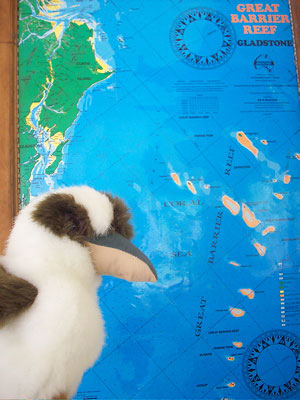

 | |||||||
|
|
Journals 2008/2009Zamaria Rocio
August 27, 2008 Even though we did not receive a dead coral head from the day before, there was plenty of work to do. Meal dishes had to be washed so I volunteered my services, I also noticed the kitchen floor had a lot of dirt on it due to the construction going on right outside its door so I swept and mopped it. Around the field station everyone pitches in when there was something to be done. There were actually two separate kitchens at the field station. One was for us and the other was for the construction crew that lived there during the week. We were only responsible for the facilities we used. That night a schedule was made for washing dishes. About twice a week we will work in pairs washing the lunch and dinner dishes but everyone had to do their own breakfast dishes. On this research team are two people working on the polychaetes from the Museum and Art Galleries of the Northern Territory; a scientist from the University of Adelaide studying macro algae; two others from Murdoch University working on algae and sea grasses; an associate from the Museum Victoria who is an expert on bryozoans; an independent scientist working on echinoderms; three scientists studying soft corals and gorgonians, and of course the scientist I am working with who will be doing molecular taxonomy and bar coding. There is also support personal from AIMS including the project leader, project manager, and data manager. In addition to these people, there are the coxswain, media specialists, and BHP-Billiton employees. Most of these people will be staying the whole three weeks. Many of these same people worked on the other two Australian CReef projects. When I flew into Brisbane, I exchanged some of my money for Australian dollars. The exchange rate was $1 U.S. to $.90 AUS. One of the things I bought at an airport store was a stuffed animal. It was of a native bird called the kookaburra. I have been bringing it around the island with me, and taking pictures of it in different locations. I even had some of the scientists pose with it. My plan is to use these photographs to make a power point presentation about my stay on Heron Island for my students. Because I teach middle school students and they like stuffed animals, they will find the presentation more enjoyable. Besides this, they will find a connection to what I am showing them since the same kookaburra will be in the classroom with them. This is my solution to the island's ban on removing anything from the island. 
|
||||||